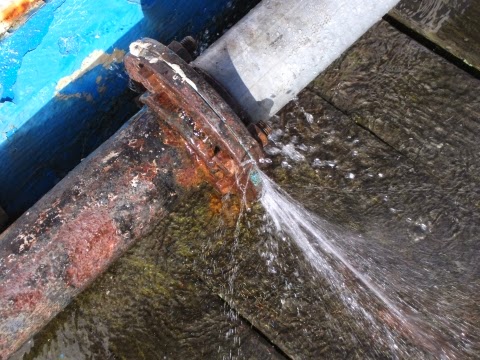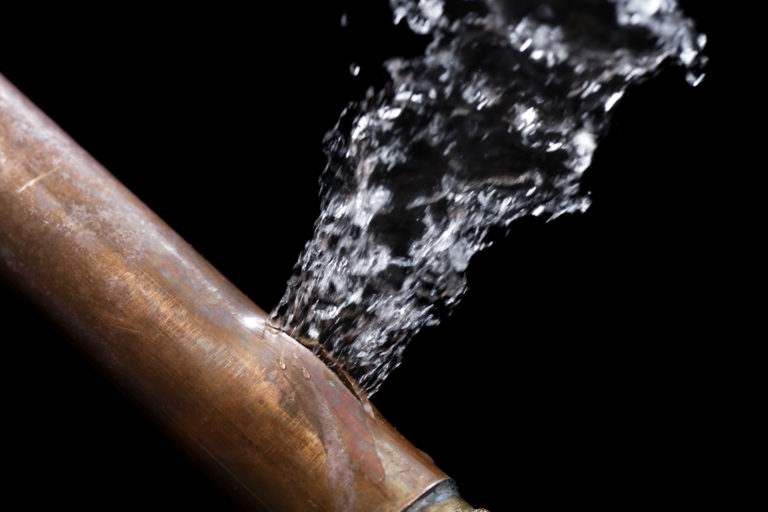Everything Homeowners Need to Know About Septic Tank Maintenance
Everything Homeowners Need to Know About Septic Tank Maintenance
Blog Article
This post in the next paragraphs involving Water Damage Restoration Do’s And Don’t is exceedingly intriguing. Don't bypass it.

What should you do if a water pipe bursts in your residence? The longer you wait, the a lot more serious the damage that can occur to your residential or commercial property. For these reasons, you need to learn how to act in the event of a ruptured water pipeline.
Shut down the Key Waterline Shutoff
The first thing to do? Shut the shut-off shutoff. Seek the neighborhood shut-off shutoff to shut off the water in one certain area just. Go for the primary water line valve as well as turn it off if you do not recognize where the local shut-off shutoff is. This action will certainly remove the water quickly in your entire residence. Usually, the primary valve is discovered outside the home next to the water meter. If it's not there, you can also locate it in 2 areas: in the cellar at eye level or the 1st flooring on the ground. Commonly, home builders placed the shut-off valve in the main ground level washroom or best next to it.
Call Water Damage Reconstruction Pros for Assistance
After shutting the water source, call the professionals for aid. Because the pipelines required to be fixed as well as there is a demand to deal with the various other problems to your residential property, this situation is not something you can do some Do it yourself. If you can not deal, seek aid from a reputable firm providing 24/7 emergency solutions. With their professional aid, you can stop much bigger water damage consisting of distorted walls, loosened tiles, or damaged frameworks. Don't take this trouble gently and seek specialist assistance for your full assurance and also a reliable remedy.
Document the Damages For Insurance coverage
While you're waiting for the pros to arrive, obtain some documents of the damages created by the errant pipe. Do close-up shots of the damaged belongings as well as places.
Recover Points That Can Be Saved
Examine the damaged products as well as take out the most crucial ones from the pile once you're done taking pictures. Dry them off in a dry/warm area far from the damaged area and also attempt to protect them as long as you can. Drag as much wetness as you can to the material so it can begin to dry out.
Begin the Drying Process
Luckily, the water from your waterlines is already tidy so you don't have to worry regarding sewer water. The flowing water might have disrupted the dust and also particles in your rugs and floorboards. Blot out as much water as you can from the surfaces with old towels.
Professionals are the only individuals certified to examine correctly and also repair the burs pipelines and also subsequent damages. They generally provide quiet red flags like bubbling paint, water spots.
What should you do if a water pipe ruptureds in your house? For these reasons, you need to find out how to act in the event of a burst water pipeline. After shutting the water source, call the specialists for aid. With their professional aid, you can protect against much bigger water damage including warped baseboards, loosened tiles, or harmed structures. Luckily, the water from your waterlines is already tidy so you do not have to worry regarding sewage system water.
How to Handle a Burst Pipe and Minimize Damage
Steps to Take Ahead of Time
If you own property in an area that experiences cold weather, you need to be aware of seasonal maintenance tasks that will help you protect your property as the weather changes each year. One of the most important steps is to winterize your pipes to ensure they won't freeze or burst when the temperature drops. This includes action items like insulating any exposed pipes, detaching garden hoses and covering outdoor faucets. If the weather gets cold enough, you may even consider leaving a faucet dripping or opening cabinet doors during the coldest parts of the day.
No matter how prepared you might be, accidents and emergencies still happen. You'd be wise to set up a savings account specifically for your property so you have a "rainy day" fund set aside for unexpected expenses. All homes—regardless of age, location or condition—will inevitably need some form of emergency repair.
Steps to Take for Frozen Pipes
A frozen pipe will not necessarily burst, so if you can catch a frozen pipe early on, you could save yourself a major headache. When your area experiences frigid temperatures, be sure to check your plumbing and keep an eye out for warning signs like faucets only releasing small amounts of water or toilets not refilling when flushed. If you do run into one of these issues, you're likely dealing with a frozen pipe.
If this happens, your first step should be to cut off the water supply to that section of the plumbing. Expanding and freezing water can quickly cause damage. Even if the water supply is shut off, you will likely still deal with some leaking from the water that defrosts after the pipe has thawed. Be prepared with a mop, bucket and/or towels to quickly soak up any excess water.
In order to thaw a frozen pipe, you can use a space heater, infrared or incandescent heat lamp, or even a hairdryer to warm up the frozen area. Heat tape is also an option and should be used according to manufacturer instructions. Do not use any sort of open flame to thaw frozen pipes, as it poses a major fire hazard and can damage your pipes further.
Steps to Take for a Burst Pipe
Water damage claims are the second most common insurance claim in the U.S. When you're dealing with a frozen pipe, the water continues to expand as it freezes, which creates pressure that can cause a pipe to burst. When this happens, the crack or leak in the pipe allows water flow from the pipe to enter your home where it shouldn't. If a pipe does burst, you need to act quickly to mitigate property damage and repair cost.
Your very first step should be to shut off your main water supply to minimize flooding—typically the most expensive damage to address. Once you've shut off the water supply, make sure you identify the entire area that has been impacted by the leak. Remove as much water as possible—as quickly as possible—using a mop, sponges, towels or a shop vacuum or wet/dry vacuum. To prevent long-term damage due to moisture build-up, run a dehumidifier or fan in the affected area. Contact a licensed plumber to ensure the pipe is correctly repaired before running any water to that section of the home again. Burst pipes and the associated water damage are something you absolutely want to avoid as a property owner. If you've had to learn your lesson the hard way, don't let yourself get caught in a similar situation during the next spell of cold weather. The best way to deal with frozen or burst pipes is to prevent them in the first place—proactive winter maintenance will save you time, money and a whole lot of stress.

I stumbled upon that review about What To Do And What Not To Do When Dealing With Water Damage when doing a search on the web. For those who enjoyed our blog entry plz remember to pass it around. Thank-you for going through it.
Report this page